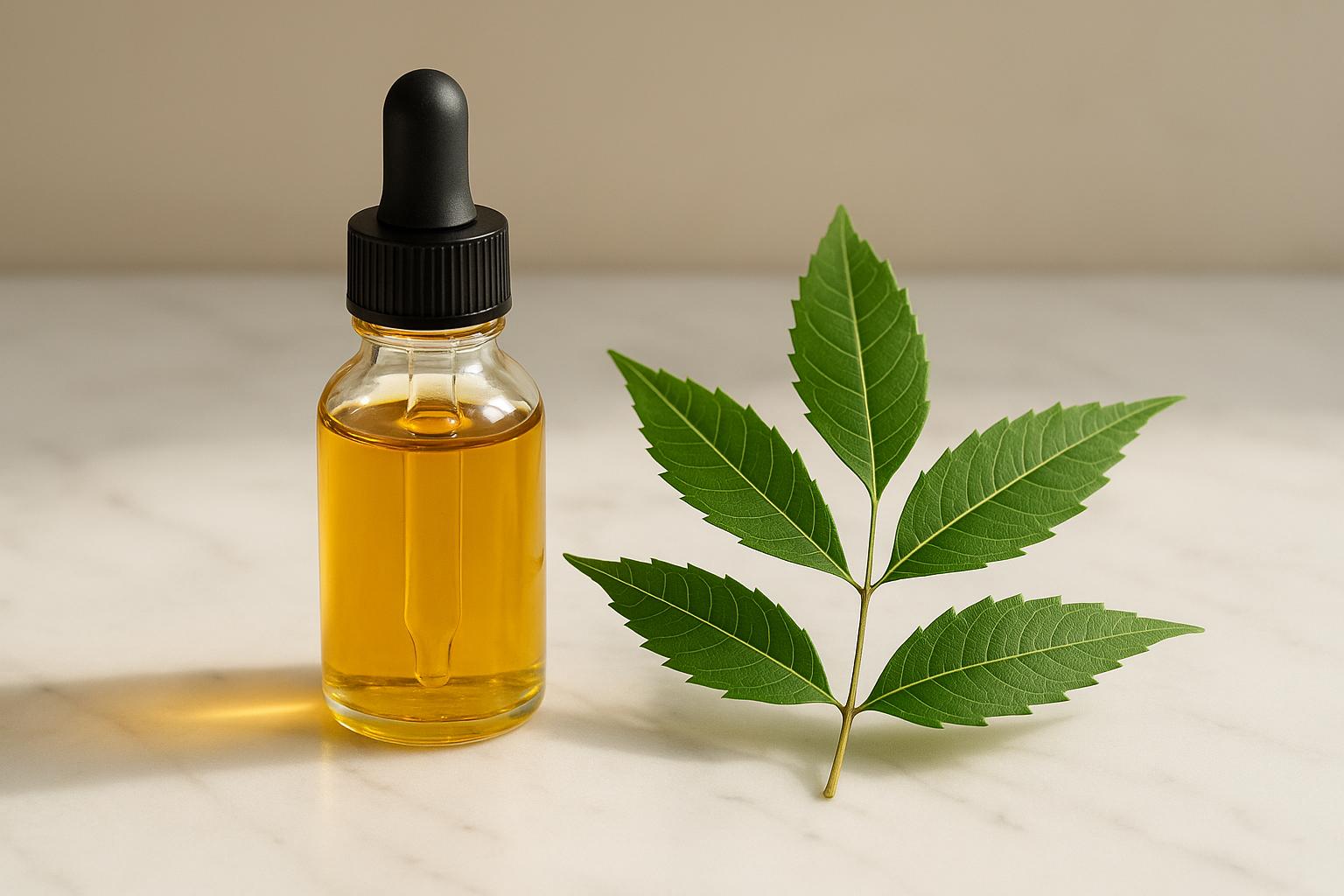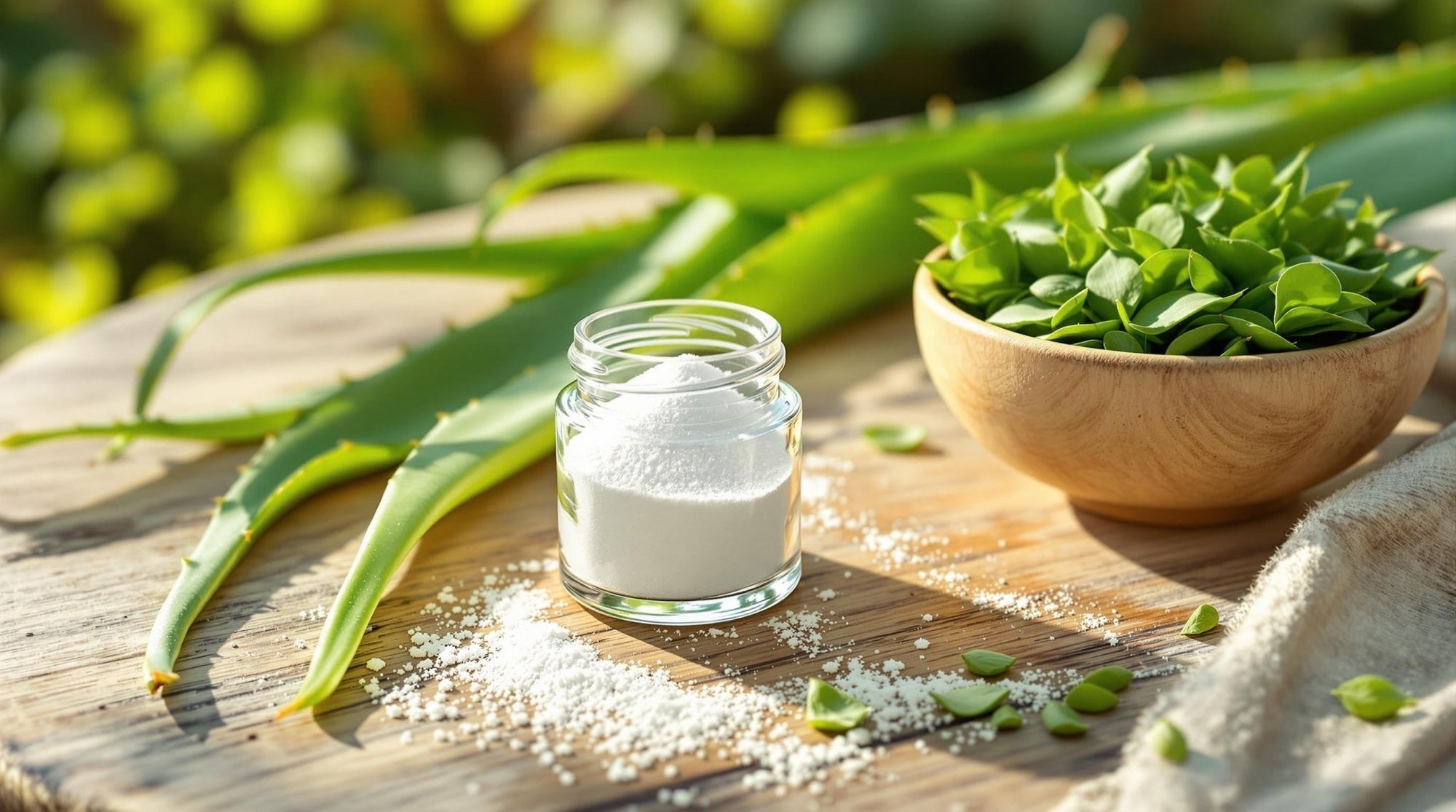How Paraguayan Neem Leaf Gets to Your Home: Part 1

We have often mentioned that the secret weapon of our psoriasis skincare products is our specially produced neem leaf extract. But how exactly will it be? made and where does it come from? We would like to offer you an insight behind the scenes in which we will explain to you in three parts where our Raw material neem comes from how neem leaf extract is made from the leaves and ultimately how the extract comes into our psoriasis care cream - after thorough tests have been carried out, of course.
Part 1: Our farm in Paraguay
This blog post is all about our neem farm in Paraguay. Stay tuned!
Where does our neem come from?
As already mentioned, our neem leaf extract is obtained from neem leaves from our own, organic-certified farm in Paraguay. The company NPP (Neem Producs Paraguay) is responsible for the operational activities on site.
The most important thing in brief: 5 important facts
- Our farm is certified organic according to the EU regulation.
- The farm has an area of around 18,000 hectares.
- Since 2014, we have planted over 150,000 neem trees as part of our reforestation project.
- From growing cuttings from seeds to harvesting leaves, everything happens on our farm and is coordinated and checked by us.
- A total of 150 people live on our farm. The tree nursery, the cultivation, harvesting and further processing of the neem leaves create good jobs, including for the women in the region.
El Retiro
Our neem farm is called “El Retiro” and is located in the Chaco of Paraguay, near Mariscal Estigarribia, near Fildadelfia. Our systematic reforestation project is managed here, for which 150,000 neem trees have been planted since 2016. This number is continuously growing. Our goal is for this number to increase to 1 million trees in the next 10 years. The mission is to sustainably reforest a grazed area and to be able to offer high-quality Neem raw materials. The farm also has 8,500 cows that graze on the farm. The neem trees provide them with shade and the cows fertilize the trees with their dung. Win win!
Currently, 150 people, including families, live on site, 20 of whom are involved full-time in the daily activities of the neem farm. A school was even built to give the children on the farm the opportunity to attend classes on site and not have to go to boarding school separately from their families.
Organic certified, high quality farm
Our farm has been certified by CERES (=Certification of Environmental Standards GmbH), so we can claim to be an organic-certified farm according to CE-OS (=CERES Organic standards). We have also received a photosanitary certificate from DINAVISA (=Dirección Nacional de Vigilancia Sanitaria), which proves that the leaves are free of pests and can therefore be imported into Germany without being quarantined. This proves the purity and high quality of our neem leaves, which is guaranteed thanks to strict controls and regular inspections of our neem trees by the officials.
Handling our plants - From seedling to tree
From harvesting the seeds to growing and planting the seedlings in the fields, everything is documented in detail. This means we can easily track the individual work steps and ensure the high quality of our raw materials.
Below we will give you an overview of how we grow our plants.
-
When the neem trees are large enough and bear fruit, they are harvested.
-
The cores of the fruit are then planted in small containers and grown in our nursery in a protected environment from the sun. After a few days, seedlings will develop.
-
Once these leaves form, they are transplanted into larger containers and cared for until they are three months old.
-
Now they are big enough to be planted on the farm. They are transported to the field on trailers.

-
Holes are drilled into the earth on site by a tractor equipped with a drill.
-
Since the neem plants will grow into large trees, it is important to ensure a certain distance between the trees. This is also possible with the tractor as it is equipped with a GPS system that ensures that the small plants are planted in straight rows at regular intervals. Although the plants are already large enough to be planted on the farm, their root ball is not yet developed enough for the plant to support itself.
-
They will be watered for the next year until their root system has developed better and is large enough to provide independent care. The water for irrigation comes partly from a rainwater collection basin on the farm, which is pumped into tanks and distributed from there, and partly from wells (here the water still has to go through a desalination plant). The energy required for the process is generated by solar panels installed on the farm.
-
After about a year, the plant has grown into a stately neem tree.
In the next part (Part 2) you will learn more about the processing of neem leaves and the production of neem extract.
This way to get to our psoriasis care cream!



